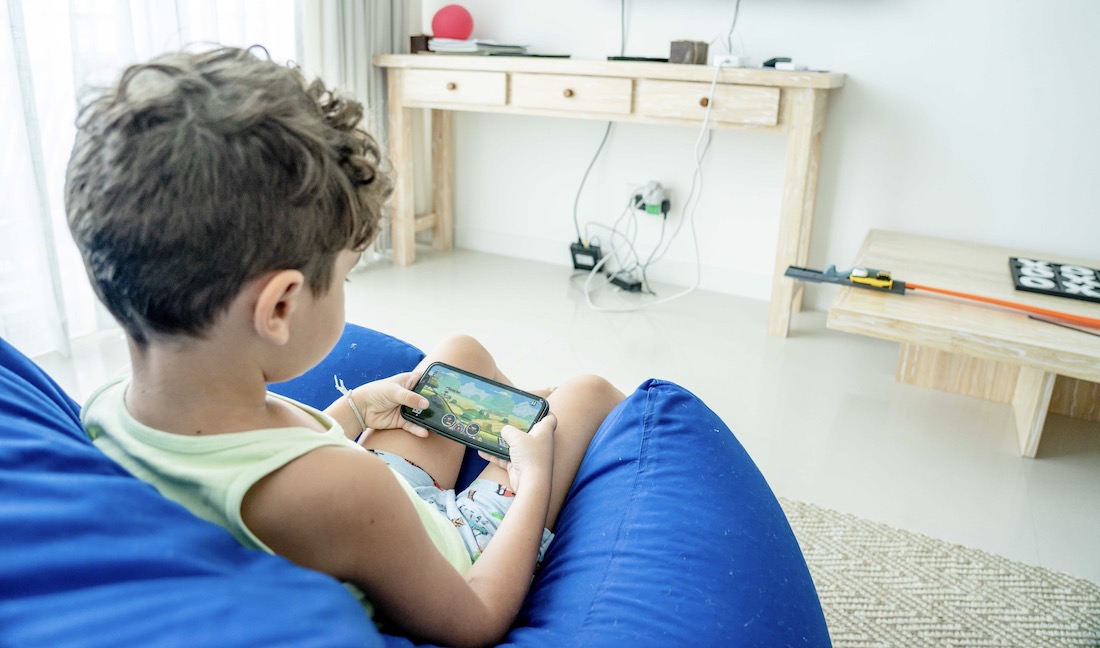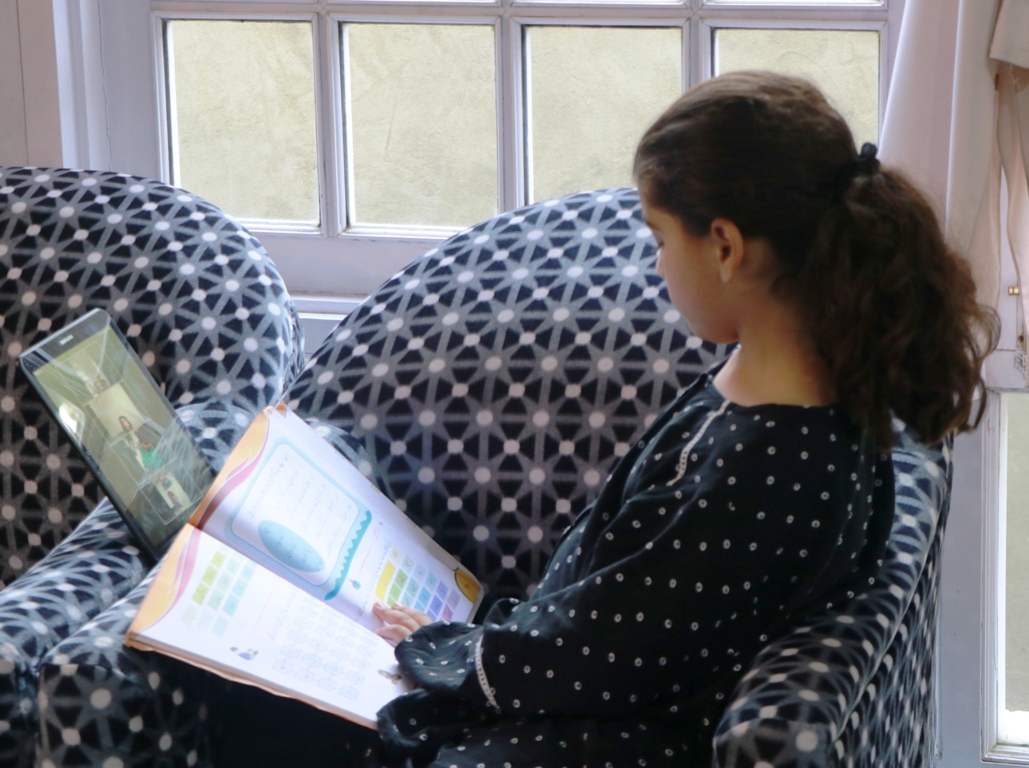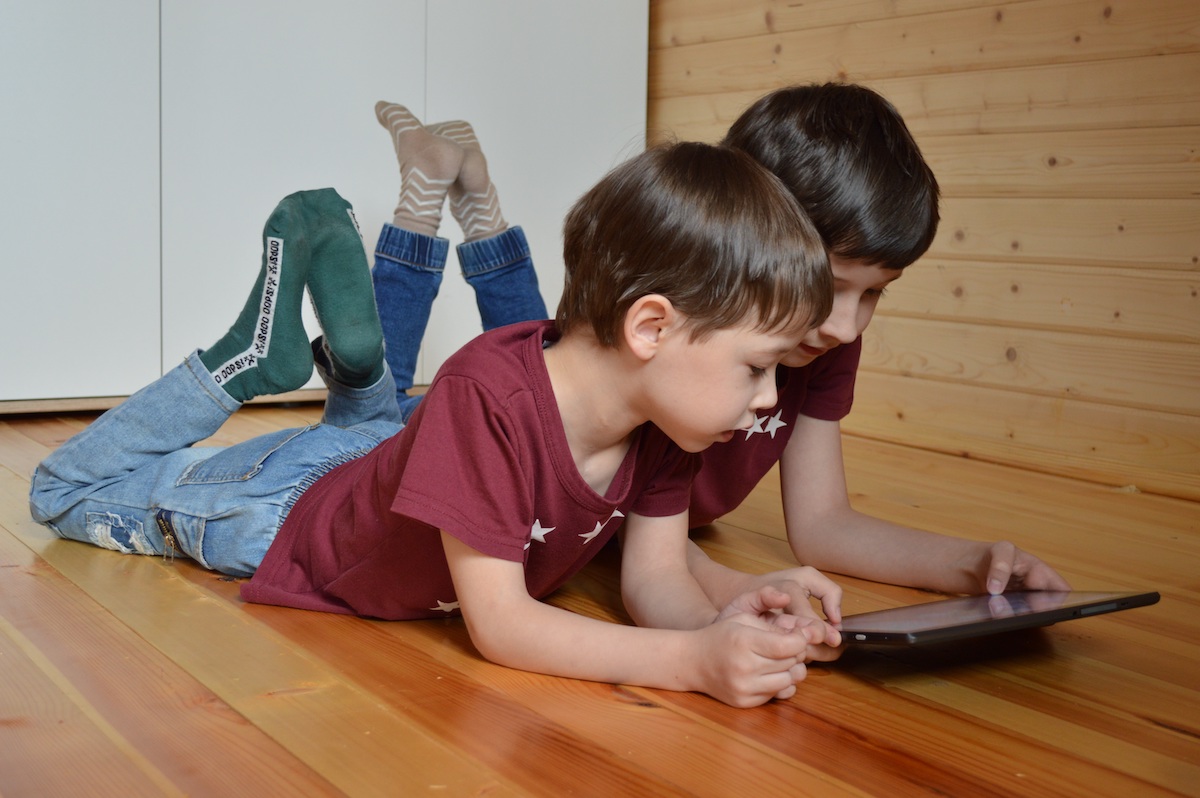Toys are no longer in demand as kids at a very early age are exploring the cell phone to stay engaged. It is gradually snowballing into a serious health and psychological crisis, reports Syed Shadab Ali Gillani
“My 17-year-old cousin, Heeba, exhibits a noticeable behaviour change, attributing it to her self-proclaimed status as a social media star,” explains Zaira, 36. Identifying herself as a Gen-Z, she has distanced herself from her family and is primarily engrossed in her phone. “She is always on Snapchat, Instagram, and other social media platforms, making that her world,” said Zaira.
Heeba got her cell phone at 15, and it instantly became her inseparable ‘appendage’. “She cares very little about the world now. She has withdrawn from her family, engaging in conflicts with us. Many family members have developed resentment towards her.”
“If they do not understand me, I don’t care about them at all. My phone is my world, and I don’t think I can operate without it,” is Heeba’s routine response. Explains Zaira: “Whenever she returns home from tuition, she heads straight to her room, neglecting basic needs. She doesn’t even care about herself; her appearance is messy.”
In her defence, Heeba asserts that her friends are equally immersed in their devices. She uses her phone for around 20 hours a day, staying awake all night without any apparent concern. Zaira flags her cousin’s negative attitude, lack of respect, and social withdrawal, recounting an incident where Heeba argued with her father.
“I am troubled by her attitude and mobile phone addiction. I feel sorry for her, witnessing the strain on her relationships,” Heeba’s mother said. “She neglects her studies and focuses solely on her phone, causing me great worry.”
A New Crisis
In an age dominated by technology, children are increasingly drawn towards smartphone usage, a trend that raises concerns due to its physiological and psychological consequences.
A study published in The Journal of Children and Media suggests that digital devices featuring interactive and captivating content are proving more captivating to children than conventional toys.
Smartphones offer an array of interactive games, educational apps, and entertainment content that can be tailored to suit a child’s preferences. This adaptable and personalised engagement surpasses the static nature of many traditional toys.
Countless Cases
In the case of Saba, both parents work due to financial instability. Consequently, her three and five-year-old siblings are in the care of their grandparents during the parents’ working hours. In their absence, the young children often seek their mother, leading to occasional tantrums. Despite the grandparents’ efforts to pacify them, the children sometimes find solace in engaging with smartphones, a practice that extends even into their sleep. “For every normal activity, they are completely dependent on their phones,” their grandmother said.
Similarly, Nasir has developed a dependence on electronic devices, including phones, televisions, and iPads. “Nasir’s isolation, weight gain, and eyesight issues prompted an intervention,” his cousin observes. “We had to reorient his thought process to reinvigorate his engagement with life.”
Children exhibiting phone addiction may display signs of aggression and rebellion. This behavioural shift often accompanies increased stubbornness and tantrum-throwing.
A survey by Common Sense Media suggests that children tend to model their behaviour on that of their parents. If parents frequently use smartphones, children are likely to imitate this behaviour, the study said. Children imitate their parents.
Parental Control
Akhtar, a 37-year-old bank associate, provides insight into the challenges of contemporary parenting, shaped by the demands of daily life and financial responsibilities that often lead families to rely on technology to manage their children.

In an open conversation, Akhtar shares the difficulties he and his wife encounter while working to sustain their family in a fast-paced world. “The demands of managing expenses have left us with no alternative but to resort to using the phone to control and entertain our 4-year-old daughter,” he acknowledges.
As working parents, the couple finds themselves caught up in professional commitments, limiting their physical presence in their daughter’s life. This unintentional distance has resulted in an unexpected consequence – their daughter’s reliance on the phone for distraction. Despite a long day at work, the child remains drawn to the allure of gadgets, seeking solace in the virtual world.
To alleviate financial strain, Akhtar’s wife joined the workforce, contributing to household expenses and securing their daughter’s future. However, this decision came with a cost. The couple observed a shift in their daughter’s focus, with technology increasingly monopolising her attention over human connections.
Despite acknowledging the issue, Akhtar expresses a sense of helplessness. “There’s nothing we can do as of now,” he admits, highlighting the difficult choices faced by parents in a screen-dominated world. However, a glimmer of hope arises as tomorrow marks a significant milestone – their daughter’s first day of school.
The couple sees this transition to formal education as a potential turning point. With school serving as a new environment, they hope it will provide a natural break from the addictive cycle of screen time, allowing their daughter to explore a different dimension of learning and social interaction.
As Akhtar reflects on the challenges ahead, he acknowledges that this phase is one they must navigate together. Balancing the demands of work, financial stability, and the well-being of their child is an ongoing journey, and tomorrow’s school day represents a unique opportunity for change. As they brace themselves for this new chapter, Akhtar and his wife remain committed to finding a harmonious equilibrium between the digital and tangible aspects of their daughter’s upbringing.
= Romana, 35, a homemaker, grapples with a daily challenge familiar to many parents in the digital age. With a three-year-old daughter and an eight-year-old son, her attempts to shield her children from gadget addiction become a daily struggle between parenting and the allure of screens.
Romana shares her story with a hint of exasperation: “No matter how hard I try, my kids have become uncontrollable when it comes to gadgets. They insist on having my phone consistently, claiming it’s for their benefit. They’ve reached a point where they can’t eat or function without the screens.”
As a conscientious parent, Romana implements a screen lock on her phone to regulate her children’s usage. However, she reveals the chaos that ensues when the phone is not readily available in an unlocked state.
“If I don’t give it to them unlocked, there’s noise and chaos in the house. As a homemaker managing daily responsibilities from morning to evening, it becomes a tough dilemma. How can I deny them the phone when I need to juggle household chores? I can’t be running after my kids every day.”

Experts Speak
Dr Rayees, a child specialist, said the excessive gadget use poses concerns for individuals, particularly children, given their developmental stage where the brain and senses are still evolving. He emphasises the impact of digital content on children and notes a significant increase in gadget usage across age groups, including toddlers, in recent years. Multiple studies have been conducted to investigate the consequences of prolonged screen time on children.
“Paediatric guidelines recommend avoiding gadget use for those below two years of age to prevent negative outcomes such as Attention Deficit Hyperactivity Disorder (ADHD), cognitive delays, impaired learning abilities, increased impulsivity, and a decrease in self-regulation,” the doctor said.

Discussing the physical effects, Dr Rayees notes increased inactivity, hampered physical activities leading to obesity, posture issues, and exposure to inappropriate content influencing behaviour. “Monitoring and restricting gadget usage are deemed crucial to mitigate these issues”.
Excessive exposure to gadgets can result in socialising issues, speech, or language delays, developmental features associated with autism, and eyesight problems. Quality and quantity of sleep can also be adversely affected, hindering children’s interaction with their surroundings.
The American Academy of Paediatrics underscores the role of advertising in shaping children’s preferences, indicating that “digital media, including in-app advertisements, can contribute to a heightened desire for smartphones and tablets over traditional toys”.
Dr Yasir Rather, a professor in the Department of Psychiatry at Government Medical College Srinagar, affirms the well-established link between excessive gadget use among Gen Z and various impacts on mental health. Increased screen time is associated with sleep disturbances, anxiety, depression, and potentially social isolation from virtual interactions.
Dr Rather advocates for “promoting healthy screen time limits, encouraging offline activities, fostering open communication about online experiences, educating on the importance of a balanced lifestyle, and involving schools in promoting digital literacy and mental health awareness”. Regular counselling support is recommended for those facing mental health challenges.
(All names except of experts have been changed for anonymity.)















